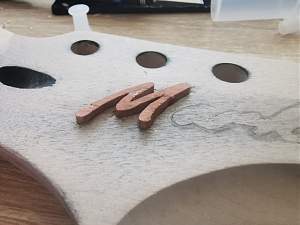Welp, that seems to work. A bit of a mess up close, but have happily embedded the M. It broke again, of course, but that's okay. So the plan now is to complete the "routing" for the inlays and then CA glue them in. Then I'll pare off the excess and fill all the tiny chipouts and mistakes with maple wood filler.







 Reply With Quote
Reply With Quote

